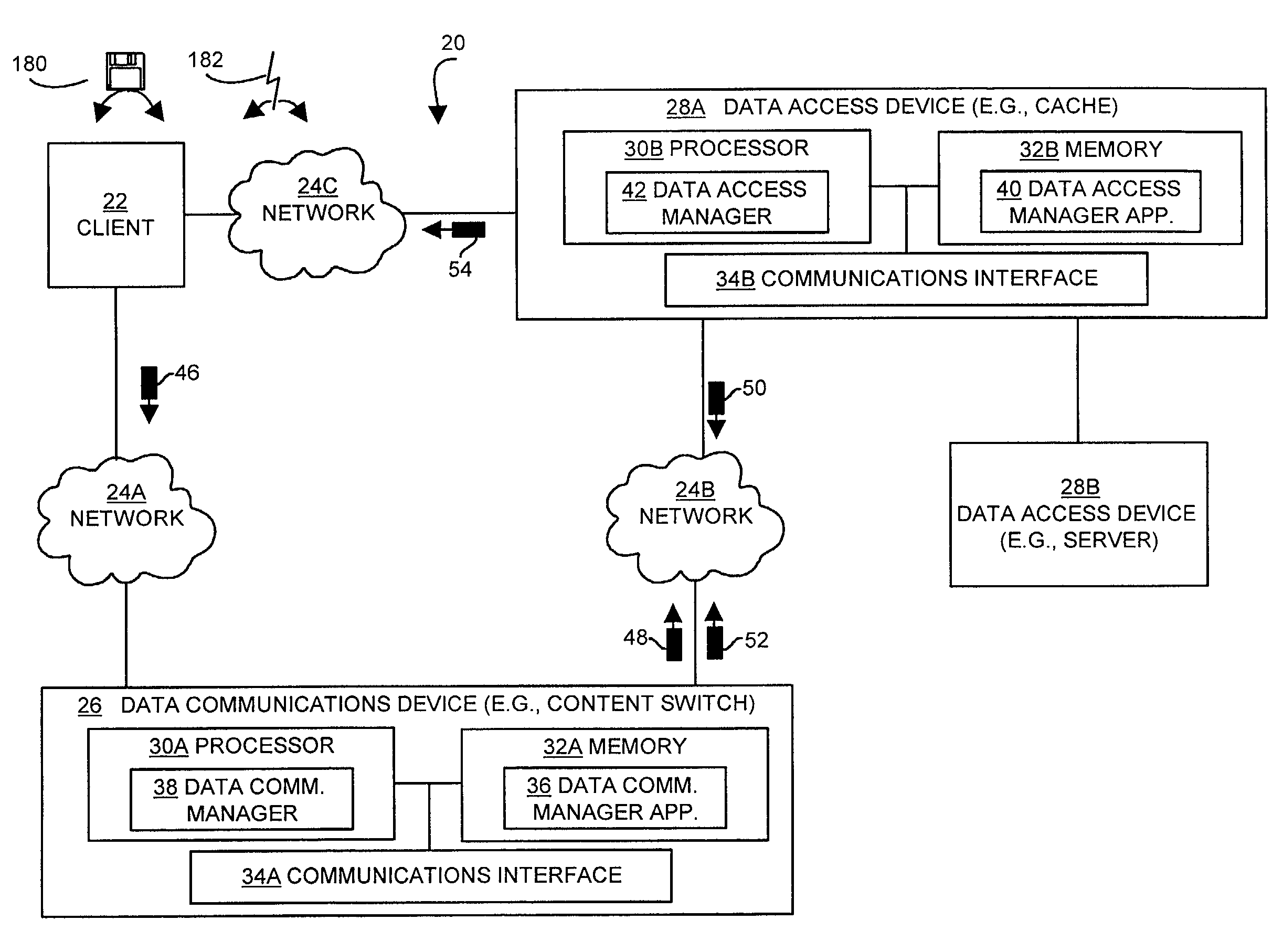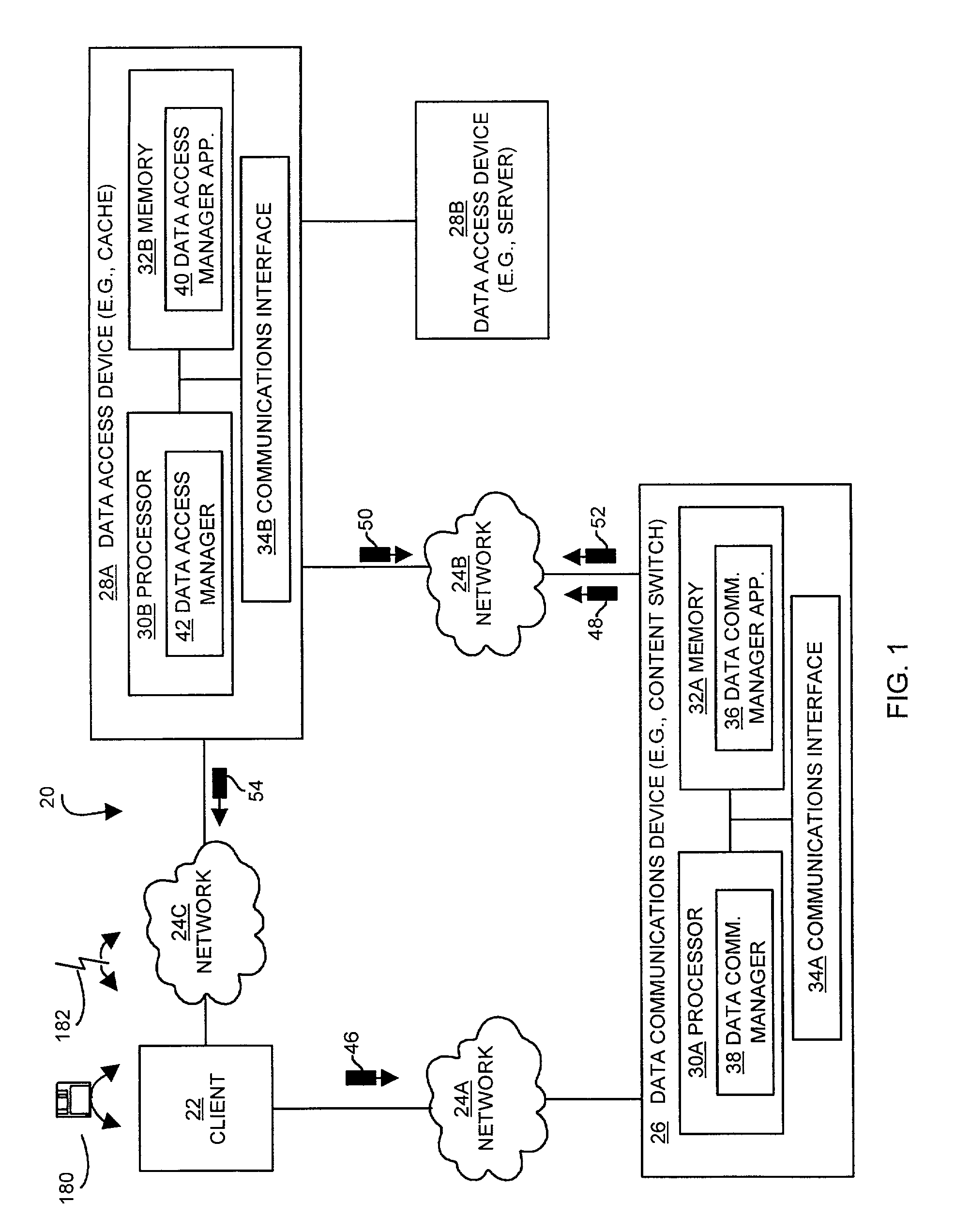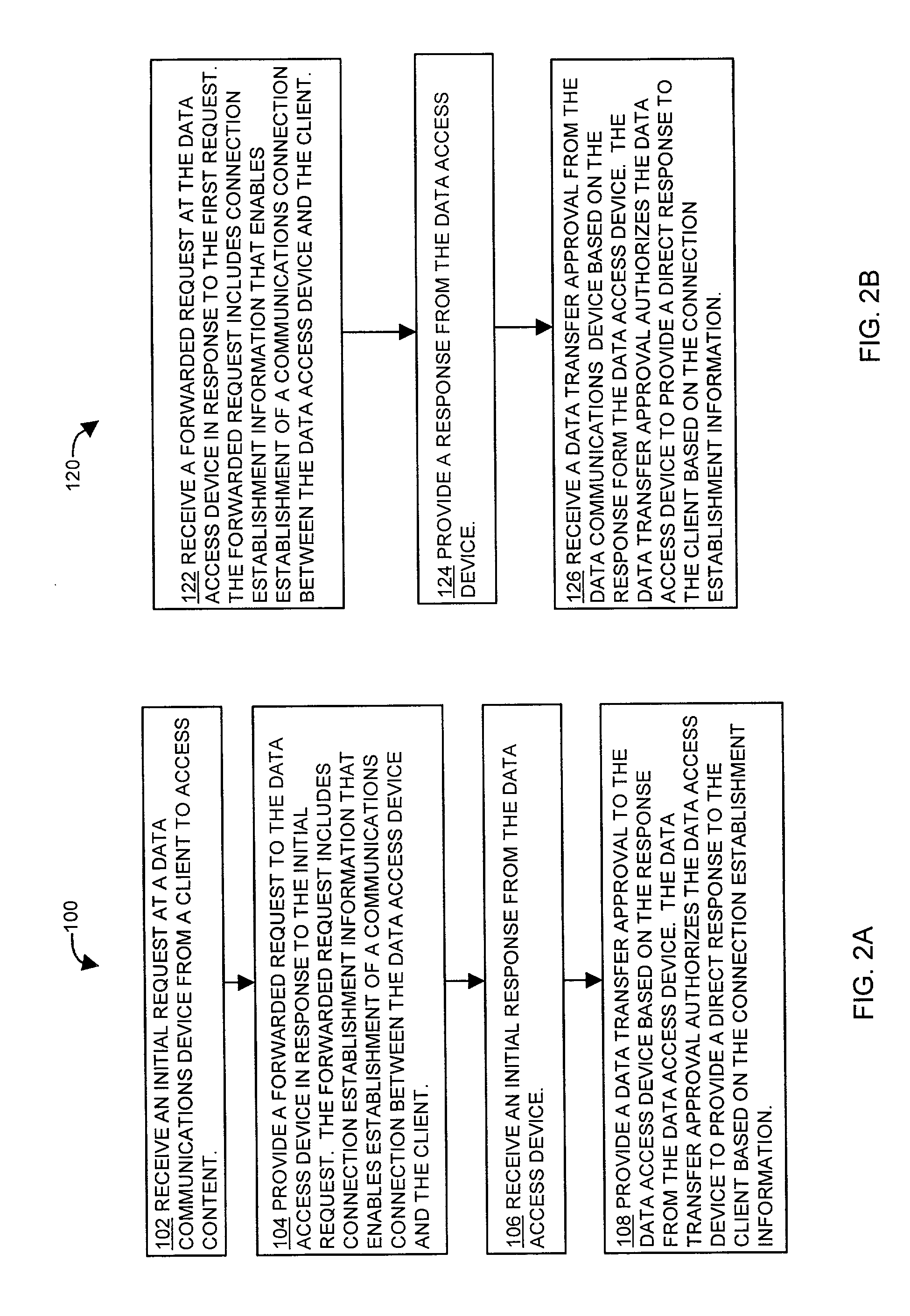Methods and apparatus for managing access to data through a network device
a network device and data management technology, applied in the field of methods and, can solve the problems of many the overhead of establishing and re-establishing many tcp connections, and the number of problems of network devices and servers, so as to facilitate the return of responses, improve performance, and accurate load balancing
- Summary
- Abstract
- Description
- Claims
- Application Information
AI Technical Summary
Benefits of technology
Problems solved by technology
Method used
Image
Examples
Embodiment Construction
[0038]The invention is directed to techniques for forwarding a request initiated by a client from a content switch to a web cache (or other content delivery device) that provides the response to the client without passing through the switch. In the approach of the invention, the content switch uses a Heads Up Switching Protocol (HUSP) to forward the request to the web cache along with source and destination IP addresses, port information, sequence numbers, client window (e.g., TCP window for receiving data), and other related information, such as HTTP header information. The web cache can then use this information to return content to the client in an HUSP response that is sent to the client without passing through the switch. Thus, the content switch is not burdened with handling all of the responses, and the responses are not delayed due to passing through the content switch. In addition, the HUSP provides a request sequence number that facilitates returning responses from multipl...
PUM
 Login to View More
Login to View More Abstract
Description
Claims
Application Information
 Login to View More
Login to View More - R&D
- Intellectual Property
- Life Sciences
- Materials
- Tech Scout
- Unparalleled Data Quality
- Higher Quality Content
- 60% Fewer Hallucinations
Browse by: Latest US Patents, China's latest patents, Technical Efficacy Thesaurus, Application Domain, Technology Topic, Popular Technical Reports.
© 2025 PatSnap. All rights reserved.Legal|Privacy policy|Modern Slavery Act Transparency Statement|Sitemap|About US| Contact US: help@patsnap.com



